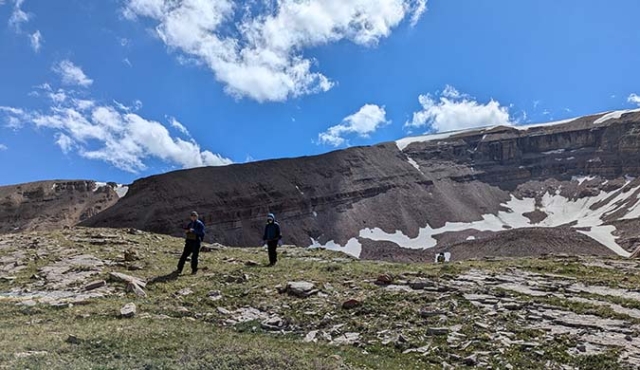Learning from Locals: Adventures and Challenges of Fieldwork in Diverse Ecosystems
When in Rome, do as the Romans do; when on a field expedition in Colorado, do as the local flora do! Colorado is home to an impressive diversity of geographies and environments, from prairie to shrubland to alpine tundra. It’s a botanist’s paradise to conduct fieldwork in these environments, but these varied conditions make expeditions both adventurous and challenging. As a seasonal botany assistant in the Research & Conservation Department, I’ve learned to adapt to our environments by paying attention to the locals.
In the sun-soaked eastern plains, heat and drought are concerns for human researchers and leafy subjects alike. Artemisia frigida, or fringed sagebrush, has learned to make the most of the fleeting water. They grow taproots as deep as five feet underground when water is abundant but can alternatively grow branching roots near the surface when water is fleeting. Thanks to its adaptability, fringed sage has become a ubiquitous plant across the plains. For humans living and working in this arid environment (including Denver), we can learn from the sagebrush as well. Since humans don’t have roots, it’s wise to drink up when you’re near a source of water and be sure to pack enough water for the day ahead. Bonus points for added electrolytes!

Fringed sagebrush is a drought and salt tolerant species. Since it lives in salty soil, Artemisia may not need to add electrolytes but we humans probably should. Photo: Andrew Sebastian
The high alpine is the postcard-perfect destination in Colorado. It’s an environment where the forces of nature are on full display: fleeting summer seasons, crackling thunderstorms and exposure to wind and sun. I think the beauty in the alpine comes from this extreme environment, but it does make it a challenging place to collect data. Once again, we can learn from its full-time inhabitants for tips on thriving in this difficult landscape. Physaria alpina, or Avery Peak twinpod, knows to stay low to the ground to avoid the winds and makes the most of the short summer to flower. For us humans venturing in the alpine, you can follow Physaria’s example by wearing layers, staying low to dodge the winds and enjoying the beauty of the short summer while it lasts.

Physaria alpina stands out from its rocky surroundings with its beautiful flowers to attract alpine pollinators during the short summer season. Photo: My-Lan Le
Studying plants gives a unique perspective on life in the environments of Colorado. The wide range of ecosystems cultivate innovative and integrated adaptations in the local flora. For observant botanists and outdoor enthusiasts alike, inspiration abounds from sidewalk cracks to mountaintops.

Researchers Arich Fruehling and Ash Kerber traverse the alpine landscape looking for Physaria alpina. Rain pants and windbreakers may not be as pretty as the symmetrical rosettes and yellow inflorescences of Avery Peak twinpod, but they help protect from the harsh environment. Photo: My-Lan Le
This article was contributed by Arich Fruehling, botany seasonal.
Add new comment